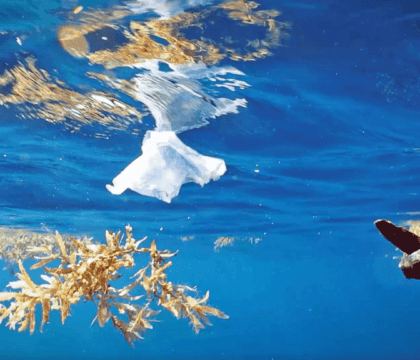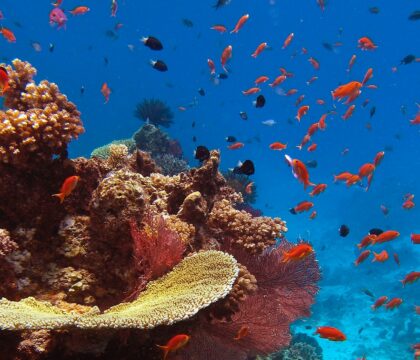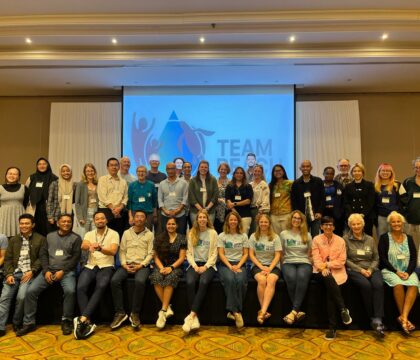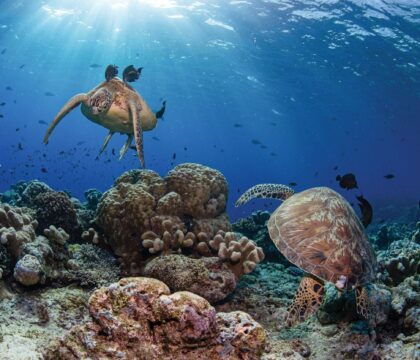November 4, 2021 • Ocean Facts, Resources
Whales often raise their tails, called flukes, out of the water when they dive, and flukes have characteristics that are unique among species and individuals. Researchers use a process called photo identification to identify and monitor individuals and populations over time, all without the need to interact or make contact with the animals. Our friends at Happywhale maintain a global catalog of marine mammal photos and sightings submitted by citizen scientists, conservation professionals (like us!) and scientists. Happywhale uses a photo identification program to identify whale flukes that was modified from a program designed to identify human faces.
A Visual Guide to Whale Fluke Identification
Let’s dive in with the humpback whale, a species that can be found in all of the world’s oceans and is seen on many of our trips, from the Farallon Islands and Mexico’s Pacific coast, to Tonga and Kenya.

Whale tails, called flukes, have unique characteristics that can be used to identify individual whales, helping researchers to study and monitor individuals and populations over time. © Rhys Watkin
Humpback whale flukes, like all cetacean flukes, have two lobes (or flukes): a left lobe (or fluke) and a right lobe (or fluke). Humpback flukes can be up to 18 feet wide, with a serrated “trailing edge” (the end of the flukes at the farthest end of the whale), and pointed tips.
The underside of the flukes have unique black/dark gray and white pigmentation patterns, and may have scars and deformities from barnacles, entanglements in fishing gear, and even from attempted predation. The trailing edge can also be used to identify individuals by the unique ridges, notches, scars, and deformities.
Let’s Look at Some One-of-a-Kind Whale Flukes
The best way to learn about the different characteristics that help scientists identify whales by their flukes is to look at some examples. Following are humpback whale fluke identification photos that we’ve captured. Read the captions to learn about the distinguishing characteristics that are visible in each photo.

Examples of different pigmentation patterns on humpback whale flukes. © Rhys Watkin

Examples of scarring. The flukes on the left show scars from a predation attempt by a killer whale. The thin, parallel scars are from the killer whale’s teeth, and are known as “rake marks.” The circular scars on the flukes on the right are from barnacles, which embed themselves into the whale’s skin. Left image: © Eric Austen Lee. Right image: © Rhys Watkin

Examples of fluke deformities, likely due to entanglement in fishing gear. © Rhys Watkin
Ways You Can Help Humpback Whales and Other Ocean Wildlife
Join us on a whale watching trip: Your participation on our whale watching trips helps fund conservation efforts, such as our Critter Scholars Program, which delivers life-changing ocean experiences free of charge to underserved student groups and communities in the San Francisco Bay Area. We also use our whale watching cruises as an opportunity to collect photographic identification data on marine mammals, which we share with our network of researchers, including Happywhale.
Adopt a humpback whale: Symbolic whale adoptions make great gifts and the funds directly support our work to study and protect whales and other ocean wildlife.
Choose sustainable seafood: Entanglement in fishing gear is one of the leading causes of injuries and mortalities in whales, dolphins, and porpoises. Whale species that travel along the coast, like humpbacks, are especially affected because fisheries activities tend to be highest near the coast. Research in the Atlantic Ocean has found that as many as 85 percent of humpback whales have been entangled in fishing gear at least once in their lifetime! Making sustainable seafood choices is one way that you can personally reduce your impact to whales and other wildlife. Learn more in our free guide: What is Sustainable Seafood and How Do I Choose It?

There are many was that you can support humpback whales. © Rhys Watkin




